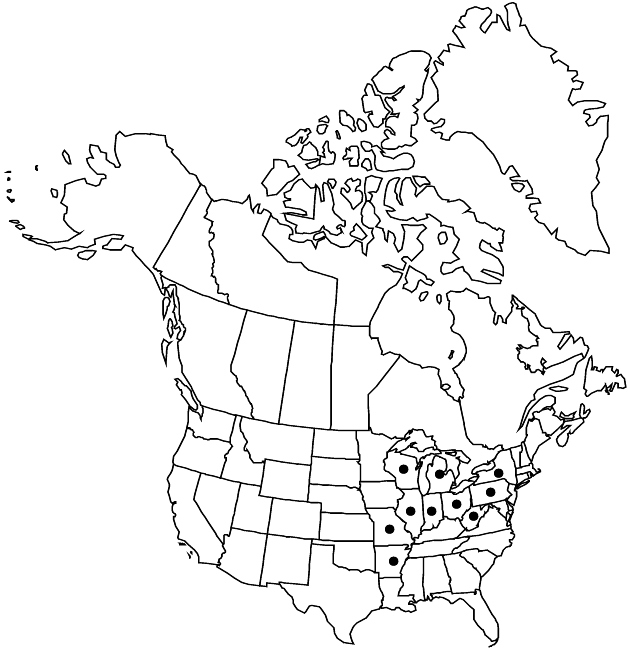Liatris scariosa var. nieuwlandii
Michigan Bot. 34: 139. 1996.
Endemic
Basionym: Lacinaria scariosa var. nieuwlandii Lunell Amer. Midl. Naturalist 2: 176. 1912 (as Laciniaria)
Synonyms: Liatris ×nieuwlandii (Lunell) Gaiser Liatris novae-angliae var. nieuwlandii (Lunell) Shinners
Revision as of 21:09, 5 November 2020 by imported>Volume Importer
Plants 30–100 cm. Stems with 20–85 leaves or leafy bracts proximal to heads. Leaves: basal and proximal cauline usually narrowly lanceolate-spatulate, sometimes broader, mostly 100–500 × 25–50(–55) mm, glabrous or hirtello-puberulent (gland-dotted). Heads usually 9–20. Florets 30–80.
Phenology: Flowering Aug–Sep(–Oct).
Habitat: Prairies, glades, open woods, bluff ledges, railroads, rocky limestone soils, red clays, jack pine, pine-oak, oak-juniper, oak-hickory, aspen
Elevation: 100–500 m
Distribution

Ark., Ill., Ind., Mich., Mo., N.Y., Ohio, Pa., W.Va., Wis.
Discussion
Plants of var. nieuwlandii are usually relatively tall and have relatively numerous, even-sized, densely arranged, lanceolate cauline leaves.
Selected References
None.
Lower Taxa
None.